Scottish cattle are known for being excellent breeds for meat production.
They are also celebrated for their butterfat milk, although they generally produce less dairy than other breeds.
Scottish cow breeds are perfect for colder climates with their thick and shaggy fur and double coat.
Their coats also make them very hardy and resilient.
Their meat tends to be leaner than other breeds as they rely less on fat for insulation because their thick and shaggy coats keep them warm.
Scottish cow breeds are excellent grazers capable of finding food even in winter.
Scottish cattle are popular among meat farmers in colder climates with so many excellent qualities.
Here are 9 popular Scottish cow breeds.
Table of Contents
ToggleAngus

Angus cattle, also called Black Angus or Aberdeen Angus, are renowned for their meat.
The unique marbling of the meat makes it well-textured, tender, and juicy.
For these reasons, it is very popular and coveted around the world.
In the United States, it has been one of the most popular breeds for beef production since its introduction to the country in 1873.
The predominant feature of Angus cattle is their black color.
They have a sister breed called Red Angus, another popular cow breed among Scottish farmers.
The Black Angus breed is considered the mother of the Red Angus breed.
Angus cattle are very hardy and capable of surviving harsh winters and storms in Scotland.
The downy undercoat does a lot to help in making this a hardy breed.
With a lifespan of 20 years, the cattle breed lives a long life.
Bulls weigh up to 850 kg, and cows weigh up to 550 kg.
The long lifespan of Black Angus cattle allows them to mate and reproduce frequently in their lifetime.
Their general hardiness and resilience make them very popular among cattle meat farmers.
Galloway
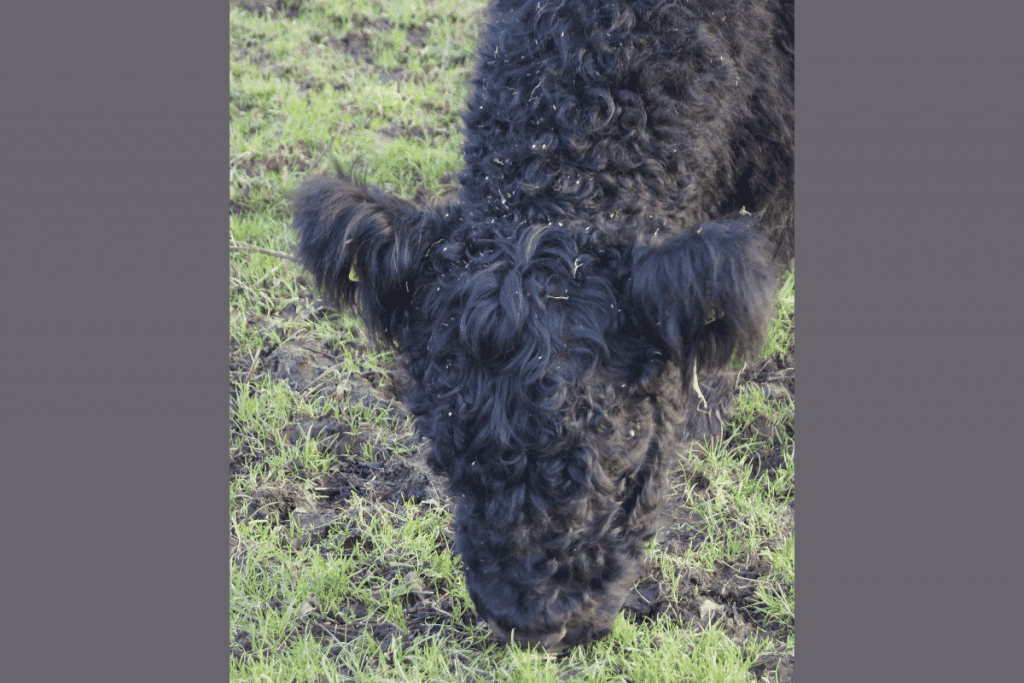
Galloway cattle are considered one of the oldest breeds of cattle in Scotland.
While Galloway cows are native to Scotland, the breed is found in many countries worldwide, including Canada, the United States, and Australia.
The thick coat characteristic of Galloway cattle makes them very well suited for cold climates.
The natural insulation provided by their woolly coats is common in many Scottish cattle breeds and makes them very attractive to farmers in colder climates with harsh winters.
Most Galloway cattle have black coats.
Another unique physical trait is their lack of horns.
Through intentional and selective breeding, the Galloway cattle have lost their horns.
The Galloway cows have small bone knobs on their heads called polls in place of horns.
The polls are a great alternative to other breeds’ sharp and dangerous horns.
Combined with the generally docile demeanor, their polls make them a breeze to keep for livestock farmers.
Highland
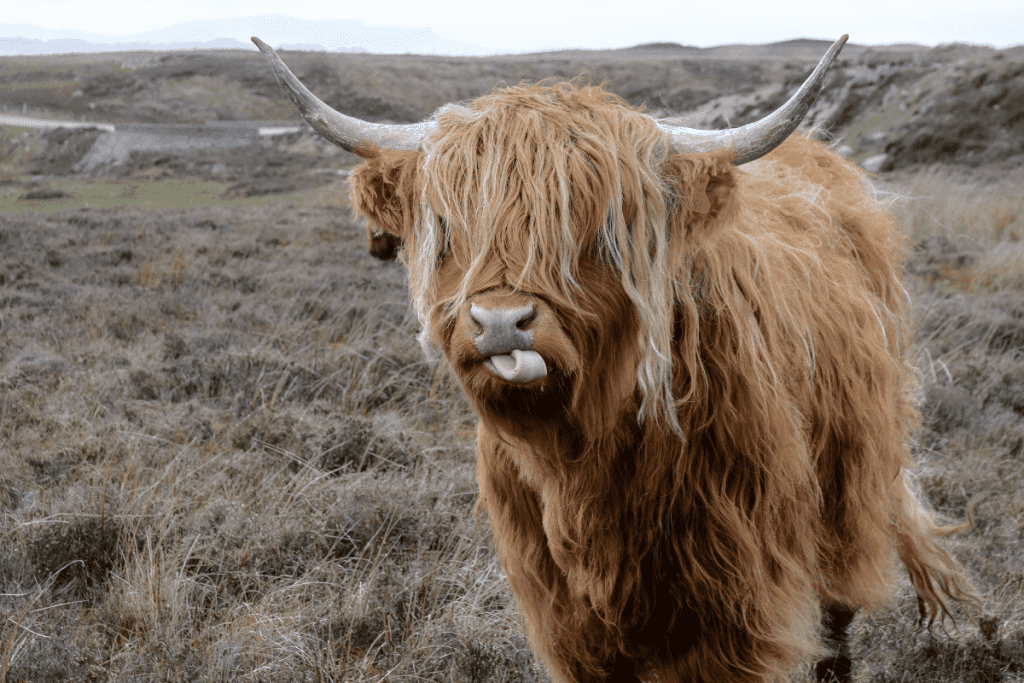
Highland cattle are an iconic Scottish cattle breed.
Their shaggy fur and long horns make this rustic breed incredibly popular and desirable.
While they are native to Scotland, the breed is very popular in the United States.
Unlike other breeds of Scottish cattle, the Highland, also called Long-Haired Highlands, come in various colors, including gray-brown, gray, ginger, yellow, white, red, and brindle.
The Scottish Highland cattle, or Scottish North Highland cattle, have thick and shaggy coats to withstand the cold winters.
Related: Do cows have fur or hair?
They are excellent foragers capable of eating almost anything, including honeysuckle and poison ivy.
Foraging helps farmers cut down on feed costs, especially with poor pastures.
If a brindled cattle breed is good at foraging, they are very desirable to livestock farmers.
Many cattle breeders will mate Highland cattle with other varieties to capitalize on their superior foraging skills.
Like other Scottish breeds, the Highlands are kept predominantly by livestock farmers for beef production and rarely for milk and dairy purposes.
Highland are one of the fluffiest cattle out there; click the link to see more fluffy cows.
Ayrshire
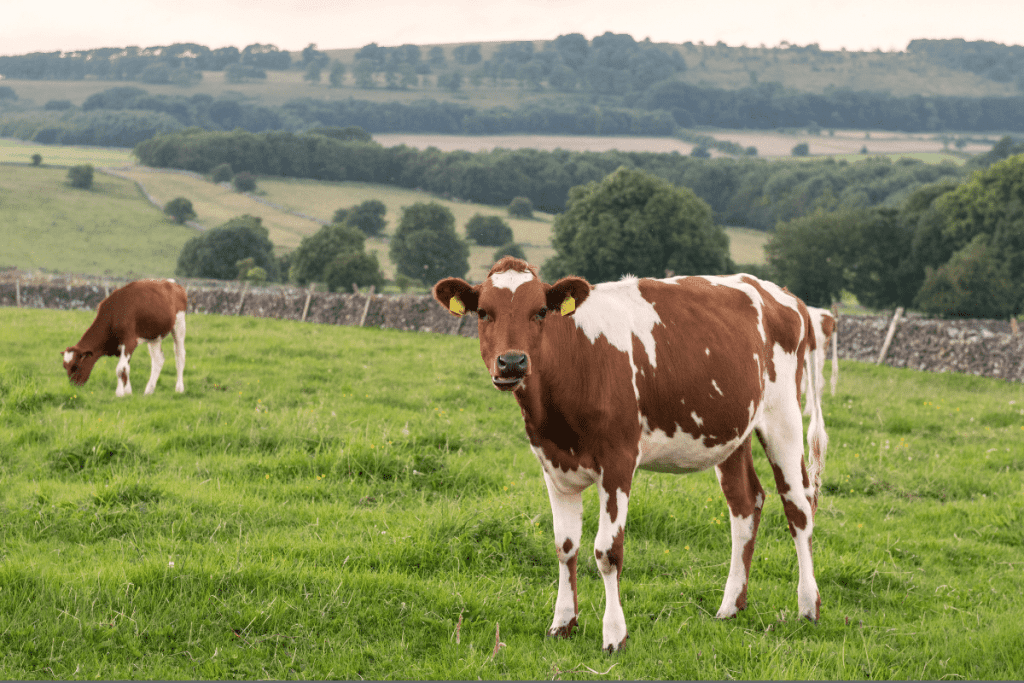
The Ayrshire cattle breed of Scotland is celebrated for its hardiness and adaptability.
The breed is popular in Scotland as well as other European countries.
While many Scottish cattle are poor milk producers, the Ayrshire does well.
This cattle breed originates from Ayrshire, Scotland, and is primarily used for milk, butter, and cheese production.
Their milk is considered to be one of the best quality cow milk.
It has high percentages of protein and butterfat.
This makes its texture and taste superior to many other varieties.
The Ayrshire cow is unique and easily identifiable among other Scottish breeds with reddish-brown and white coloring.
Typically, this breed of cattle has shorter hair as well.
They are celebrated for being excellent foragers and easily calved.
Many Scottish farmers consider the Ayrshire to be an all-purpose breed of cattle as they produce milk and meat well.
Shetland
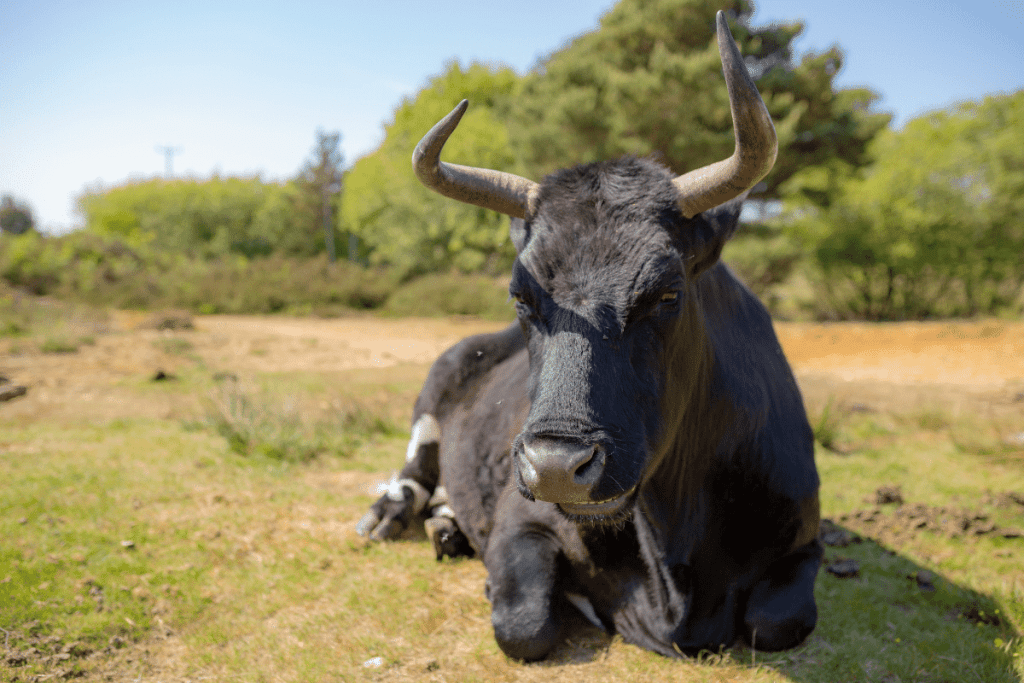
Shetland cattle are a unique breed native to the Shetland Islands of Scotland.
Considerably smaller than other breeds of Scottish cattle, the Shetland breed weighs 350-550 kg.
Their small stature makes them excellent house cows for smaller families.
They produce both milk and meat well.
Their meat has high nutritional value with more nutrients and fatty acids than milk from other breeds.
The Shetland breed is one of the oldest breeds in Scotland, with reports as early as 3600 BC.
In the 1950s, population levels were extremely low but have slowly recovered.
Despite the recovery in population, pure-bred Shetland cattle are considered very rare.
Shetland cows are easy to calve and mate well with other breeds.
Red Angus
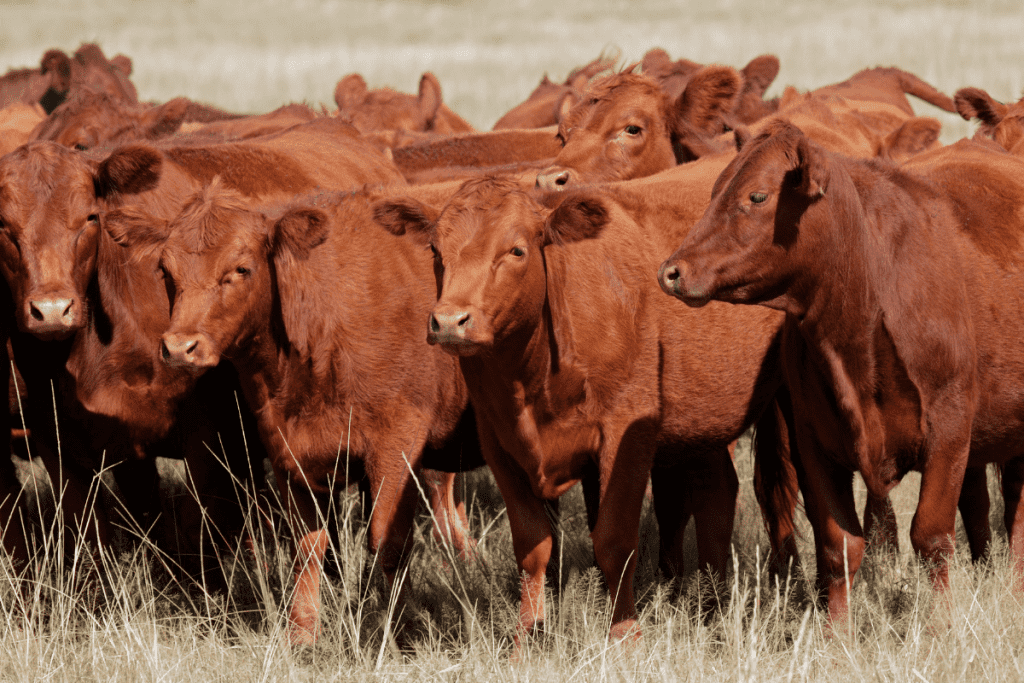
Red Angus cattle are very similar to the Black Angus or Aberdeen Angus breed.
The Red Angus cattle were bred from Black Angus.
Their characteristic red coat coloring gene is a recessive trait in Angus cattle.
Generally, 1 in 4 Angus cattle born sport the red color coat of hair with the other three having the black coat.
The Red Angus and Black Angus are considered a single cattle breed in many places.
Both breeds of Angus cattle are celebrated for their high-quality meat known for its superior marbling.
Like Black Angus cattle, the Red Angus breed produces excellent meat.
They are medium in size but produce a lot of meat and are considered very beefy.
Originally from the Aberdeen region of Scotland, you’ll find Red Angus cattle worldwide.
Red Angus beef is very popular in Africa, Australia, and South America.
You’re more likely to find Red Angus cattle in these places over Black Angus cattle.
Black Angus cattle tend to do better in colder climates and suffer in warmer climates.
Red Angus is the opposite and does better in warmer climates, so they are more popular in warmer countries.
Luing

The Luing cow breed is one of the newest additions to Scottish cattle.
The breed originated in the 1940s when three brothers named Ralph, Shane, and Denis Cadzow crossed the Shorthorn and Highland cattle.
The cross between these hardy Scottish breeds took place on the Luing Island of the Inner Hebrides of Scotland.
The Luing cattle are excellent meat producers and easy to keep.
The Luing cattle inherited the cold-weather resistance, foraging ability, and hardiness of their Highland ancestors, making them excellent for cold climates.
They also inherited the thick hide of the Shorthorn.
Shorthorn cattle are considered very easy to get meat from, which is shared by the Luing cattle.
Like many other Scottish cattle breeds, the Luing are bred primarily as livestock for beef production.
Belted Galloway
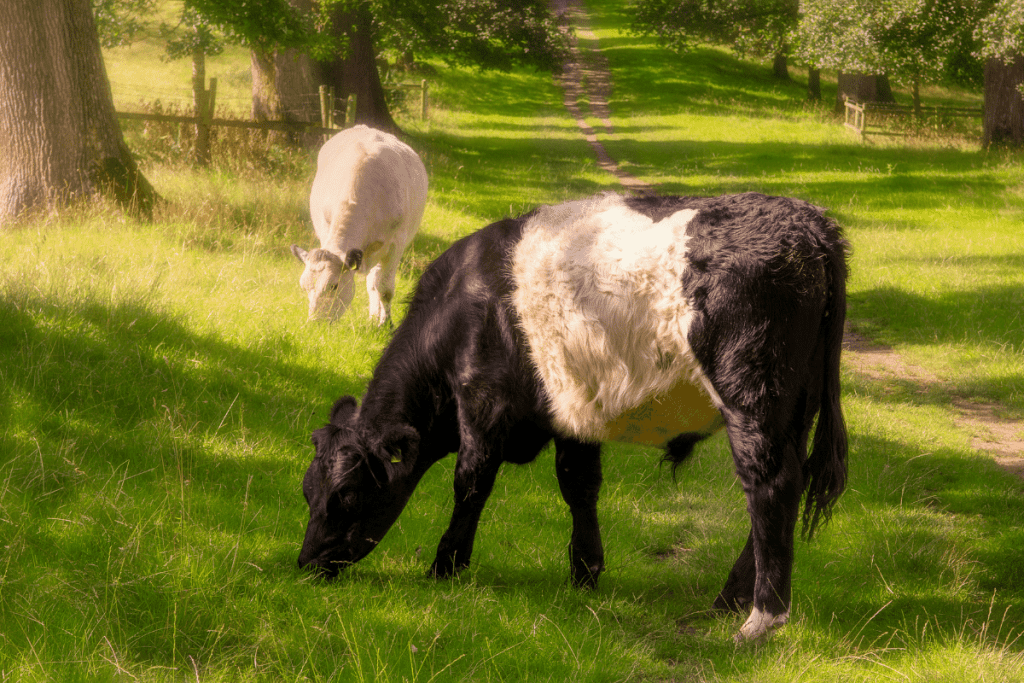
The Belted Galloway is a unique-looking Scottish breed of cattle.
The cattle are primarily black with a thick white band of fur around their midsection.
The white band is often referred to as a belt, where this breed gets its name.
Many farmers use the nicknames “Belties” or “Oreos” to refer to this unique-looking cow.
The Belted Galloway breed is low maintenance and calves easily.
Many Belted Galloway cows even produce two calves in a single year.
Primarily bred for beef, the Belted Galloway produces high-quality marbled meat.
Originally from the Galloway region of Southwestern Scotland, this breed also produces high-quality milk.
The Galloway region is known for its cold and harsh conditions, making this breed very hardy and resistant to adverse weather conditions.
The Belted Galloway is often kept as dual-purpose cattle for meat and dairy production.
They are very fertile and calve easily, making them excellent for livestock farmers looking for a no-fuss breed capable of reproducing quickly and easily.
This cow also makes our list of the cutest black and white cows.
Shorthorn
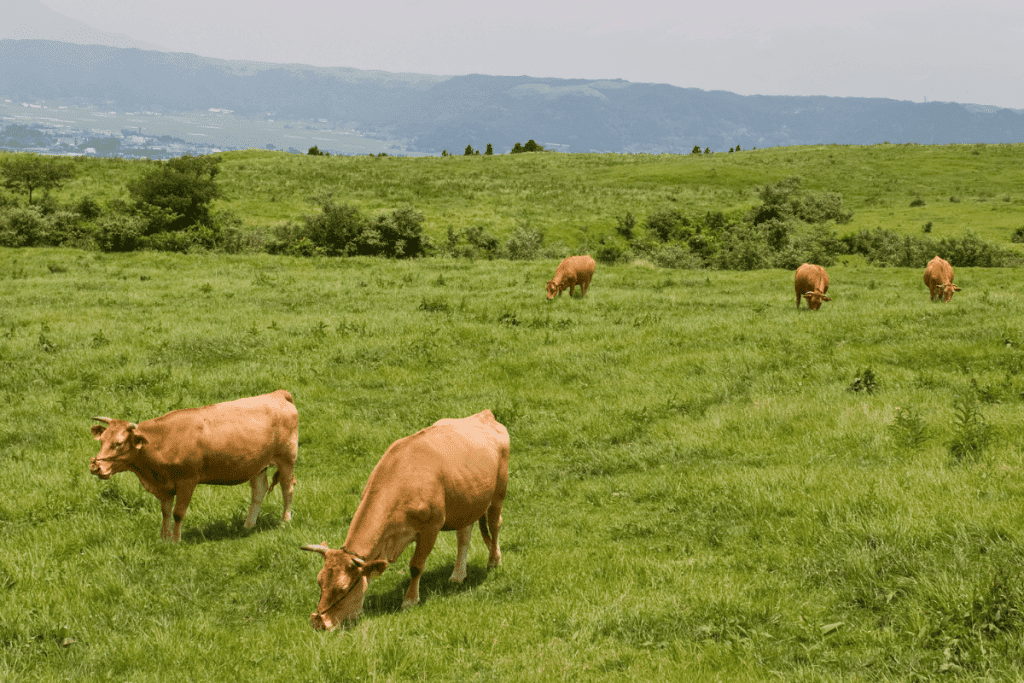
Shorthorns are a breed of cattle popular in Scotland as well as England.
The Shorthorn cattle breed is an excellent forager and descends from the Durham cattle breed.
The Shorthorn is often split into two separate classifications based on the purpose for which they were bred.
Beef Shorthorns are bred primarily for beef production, and Milking Shorthorns are bred primarily for dairy production.
Shorthorn cattle are primarily kept for beef production nowadays, although Milking Shorthorns are excellent dairy producers, as their name implies.
Shorthorn cattle are very popular in Australia, where they continue to breed and refine characteristics for various purposes, including the Australian Shorthorn.
What Scottish Cow Breed Produces The Best Meat?
The most popular Scottish cow breed for meat production is undoubtedly the Angus variety.
One of the most beneficial traits of Scottish cattle is their thick and shaggy coats.
These coats provide incredible insulation.
While other cattle breeds rely on fat storage for insulation and heat retention, Scottish cattle don’t need to store as much fat.
Less fat on the cattle leads to leaner and higher quality beef.
Most of the Scottish cattle breeds on this list are excellent for beef cattle production and meat.
Many are known for the superior marbling quality and texture of their meat.
Both the Black and Reg Angus breeds are world-renowned for their excellent beef quality.
Highland cattle beef is another popular cow breed known for producing high-quality meat.
The beef produced by Highlands is lean, tender, and succulent.
It is also celebrated for its distinct flavor.
Another benefit of Highland beef is the high levels of protein and iron.
It also tends to have less cholesterol and saturated fat than other varieties of beef.
What Scottish Cow Is Best For Dairy Production?
While most Scottish cattle are kept and bred for meat production, some varieties are known for their high-quality milk.
Milk from Ayrshire cows is considered one of the most celebrated types of cow milk in the world.
While they may not produce as much milk as other dairy cows like the Holsteins, Ayrshire milk tends to have more protein and butterfat than other cow milk varieties.
Ayrshire milk is prized for its superior texture and taste.
As far as cheese production goes, Ayrshire milk is an excellent choice.
Their milk is even called the “Cheesemaker’s milk.”
The fat globules in Ayrshire milk are significantly smaller than other cow milk.
The smaller globules break down quickly and easily during the ripening process in the cheese-making process.
This makes for delicious and easily digestible cheeses.
Cheese from Ayrshire milk is also said to have cleaner taste profiles.
What Is The Most Popular Breed Of Scottish Cattle?
The Angus breed is the most popular breed of Scottish cattle.
You’ll find Angus cattle all around the world. It is the most popular breed in Scotland as well.
Many reasons contribute to this, including their early maturity and excellent beef quality.
Early maturity allows for quick processing for livestock farmers producing beef and meat from their cattle.
The beef is famous for its superior marbling.
Marbling is the blend of intramuscular fat in the meat, which is seen as the white and red coloring of the beef.
Not only is the marbling visually appealing, but it also contributes to the texture, tenderness, and juiciness of the beef.
Another reason for the Angus cattle breed’s popularity is their demeanor.
They are usually gentle and calm.
This makes them very easy to handle.
Livestock farmers are attracted to their undemanding nature.
Angus cattle live approximately 15 years. Their long lifespan allows for cows to produce many calves throughout their lives.
For cold-weather farmers, Black Angus breeds are a great option.
They are very tolerant of the cold and resilient by nature.
However, they tend to struggle and experience bad tempers in warmer climates.
Many farmers find Red Angus cattle to be the better option for warmer climates.
How useful was this post?
Click on a star to rate it!
We are sorry that this post was not useful for you!
Let us improve this post!
Tell us how we can improve this post?
